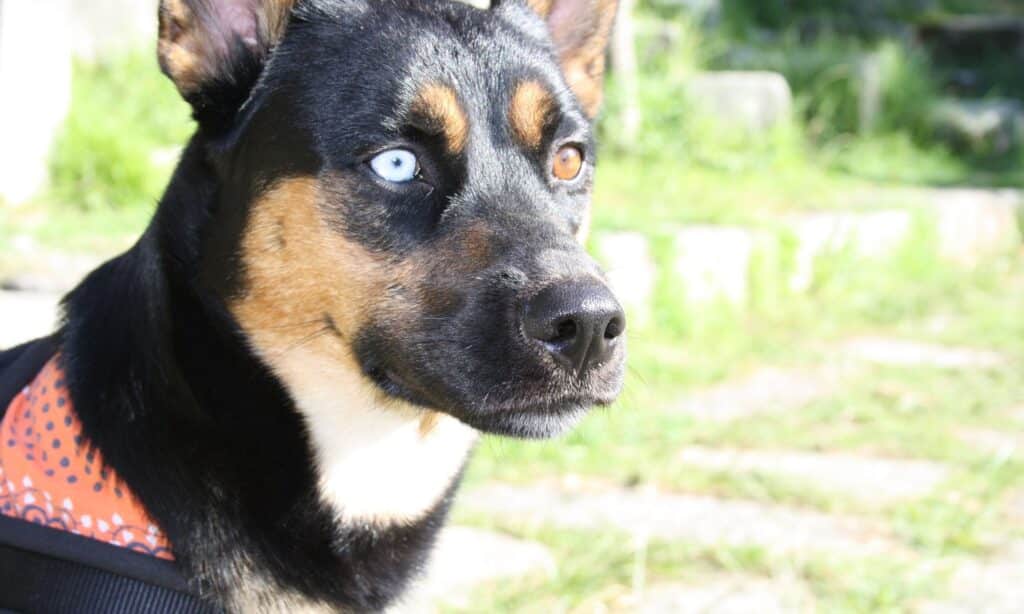“This post contains affiliate links, and I will be compensated if you make a purchase after clicking on my links.”

Does your dog have two different eye colors? Some dogs have this, and it’s called heterochromia. One of a dog’s eyes will seem blue or bluish-white, which is caused by a lack of melanin.
The pigment melanin provides a dog’s eyes, coat, and skin color. The amount of melanin present in a dog’s iris, the pigmented tissue that surrounds its pupil, determines the color of the dog’s eyes. The darker the eyes will be, the more concentrated the melanin is. For instance, if a dog has both brown and blue eyes, the brown eye would often have a larger concentration of melanin than the blue eye.
It not only affects dogs but also cats, horses, and on rare occasions, people. In dogs, heterochromia is frequently hereditary, meaning that it is passed on by genetics. However, as a result of an eye injury or a medical condition, it can also be developed later in life. Hereditary heterochromia is often unproblematic, but if you ever notice either of your dog’s eyes changing color, you should get their eyes checked by your veterinarian.
Heterochromia is common in breeds like Australian cattle dogs, Australian shepherds, Border collies, Chihuahuas, Dachshunds and Dalmatians.
Contrary to popular belief, dogs with genetic heterochromia have normal eyesight despite the appearance of different colored eyes. Another widely held misconception is that hearing issues might occur in dogs that have heterochromia. Although dalmatians with heterochromia do have a higher prevalence of deafness.
As was already noted, an eye injury or medical condition can cause acquired heterochromia. If you see your dog’s eyes changing color, take them to the vet right away. Acquired heterochromia can look similar to several eye disorders, including cataracts and glaucoma.












